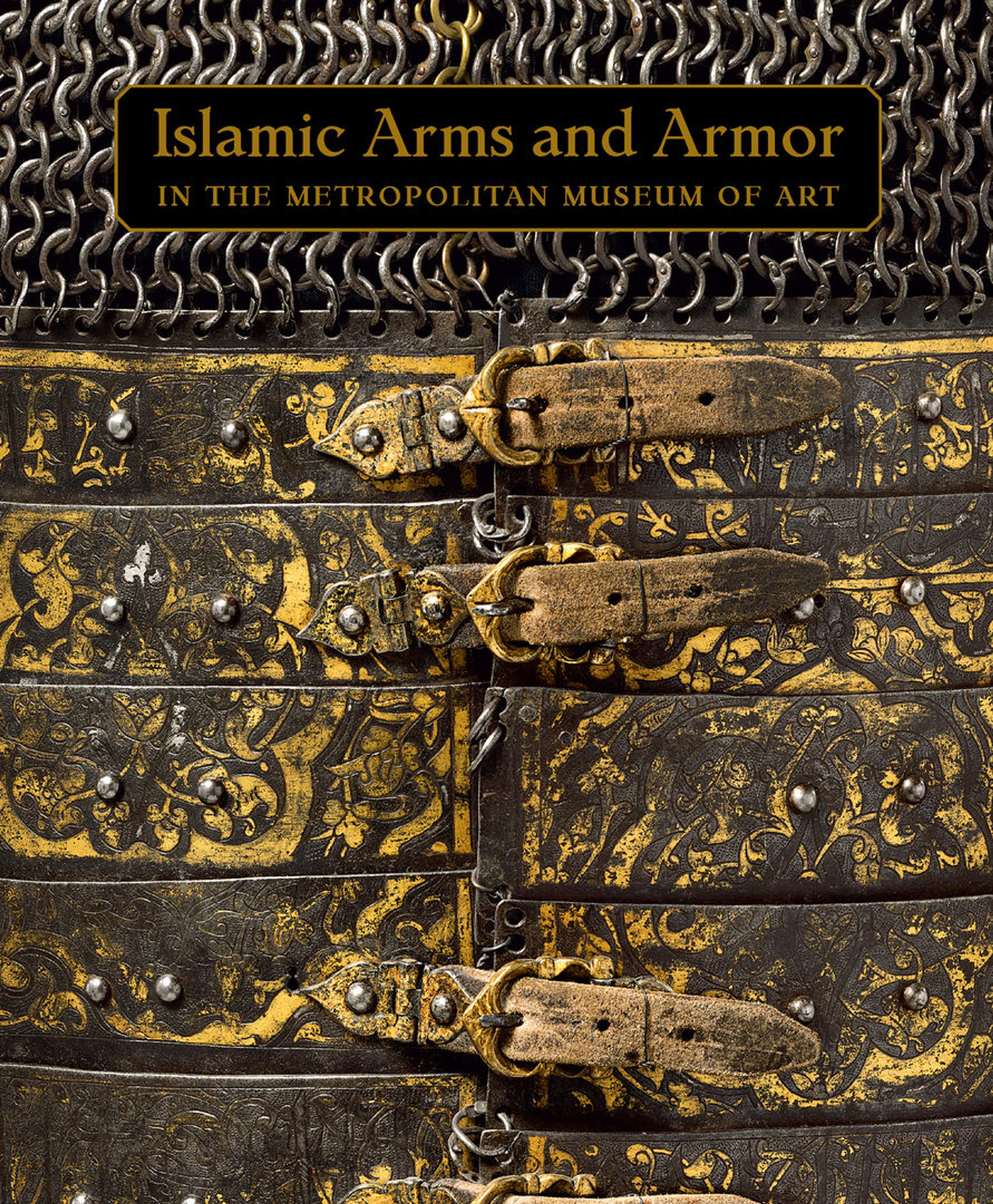Saber
Swords are appropriated through the recycling of materials and as spoils of war. Therefore it is no surprise that this sword has a precious Mughal grip made of black jade and a gold Ottoman guard that reads in naskhi script: "Sultan son of Sultan son of Sultan son of Suleiman Khan"; and on the back: "the name of God most compassionate and merciful." Although the name of an Ottoman sultan appears on the guard, it is not an indication of the provenance of the sword.
Islamic devotional inscriptions dominate the decorative motifs of arms and armor. Efficacious prayers protect the soldier from the evils of war. The inscriptions on the elegant steel blade indicate the sword's talismanic function. In square kufic script, the inscriptions state the proclamation of faith along with the valuable Qur'anic Throne verse (2:255), all damascened in gold. The back of the blade, in gold, is stamped with the Seal of Solomon (a six-pointed star) and various cartouches invoking the name of God.
Islamic devotional inscriptions dominate the decorative motifs of arms and armor. Efficacious prayers protect the soldier from the evils of war. The inscriptions on the elegant steel blade indicate the sword's talismanic function. In square kufic script, the inscriptions state the proclamation of faith along with the valuable Qur'anic Throne verse (2:255), all damascened in gold. The back of the blade, in gold, is stamped with the Seal of Solomon (a six-pointed star) and various cartouches invoking the name of God.
Artwork Details
- Title:Saber
- Date:blade, 18th–19th century; guard and decoration on blade, 19th century; grip, 18th century
- Culture:blade, possibly Iranian; guard and decoration on blade, Turkish; grip, Indian
- Medium:Steel, jade (nephrite), gold
- Dimensions:L. 36 5/8 in. (93 cm); L. of blade 30 5/8 in. (77.7 cm); Wt. 2 lb. 1 oz. (935.5 g)
- Classification:Swords
- Credit Line:Bequest of George C. Stone, 1935
- Object Number:36.25.1293
- Curatorial Department: Arms and Armor
More Artwork
Research Resources
The Met provides unparalleled resources for research and welcomes an international community of students and scholars. The Met's Open Access API is where creators and researchers can connect to the The Met collection. Open Access data and public domain images are available for unrestricted commercial and noncommercial use without permission or fee.
To request images under copyright and other restrictions, please use this Image Request form.
Feedback
We continue to research and examine historical and cultural context for objects in The Met collection. If you have comments or questions about this object record, please contact us using the form below. The Museum looks forward to receiving your comments.
